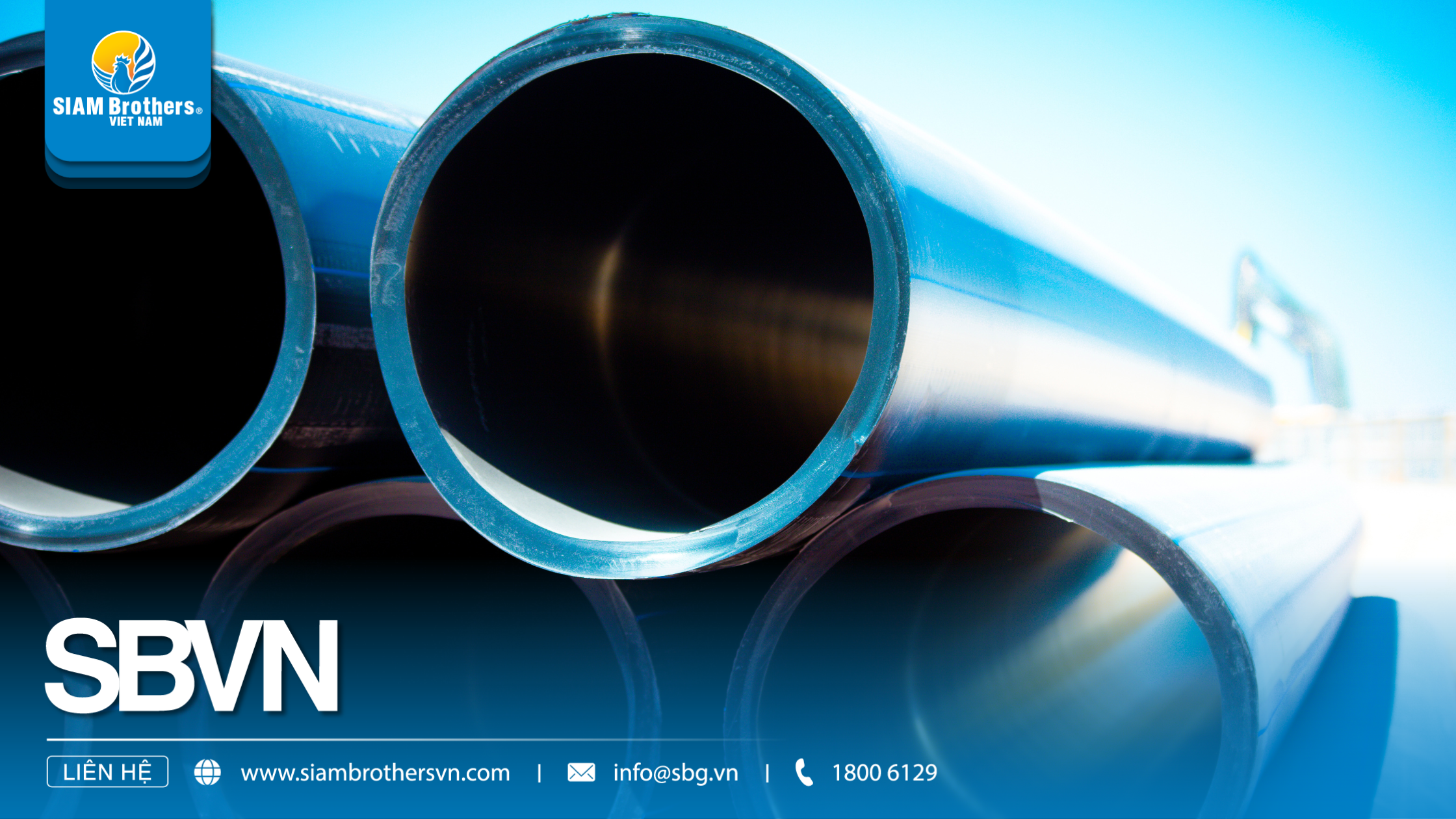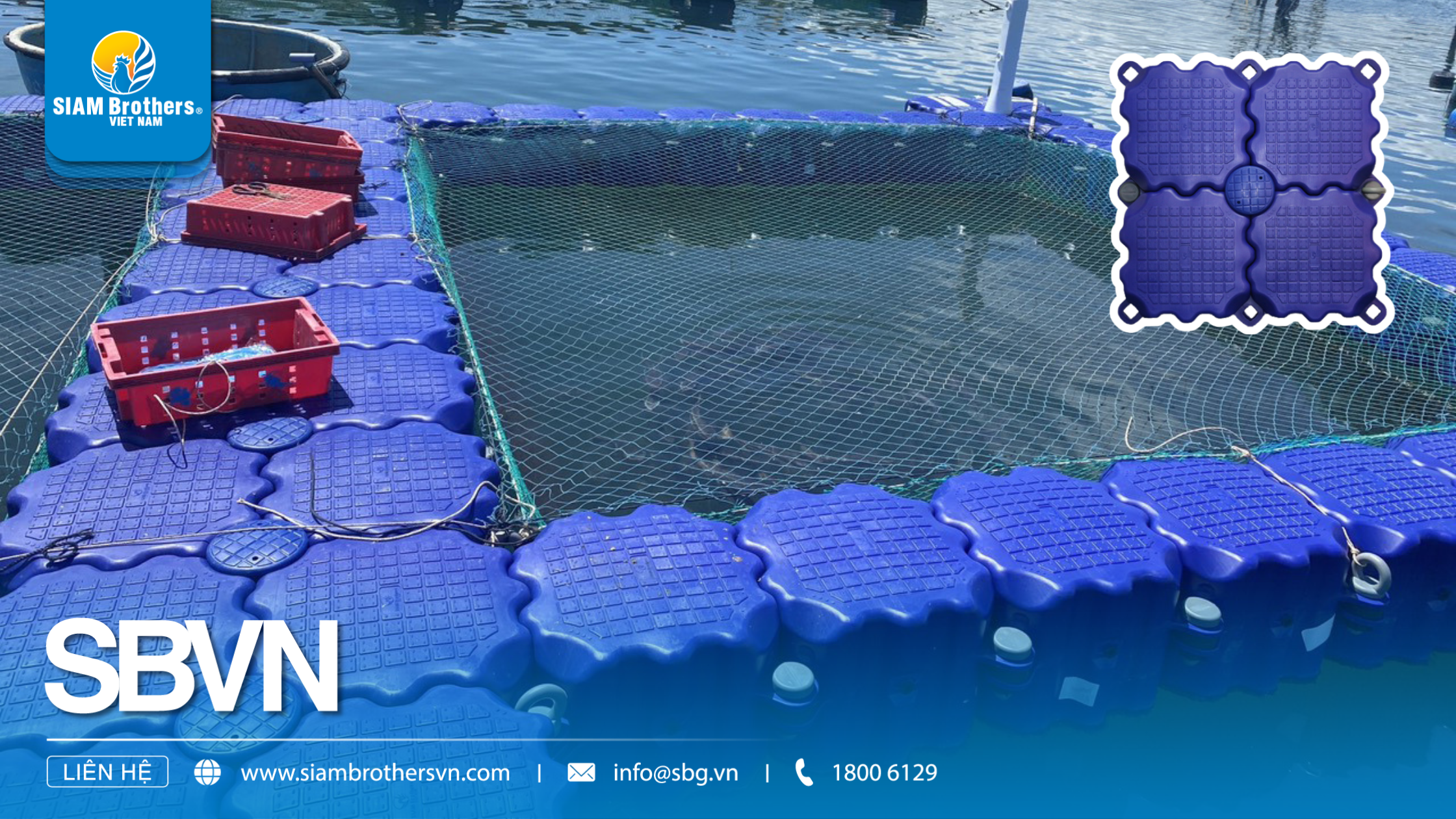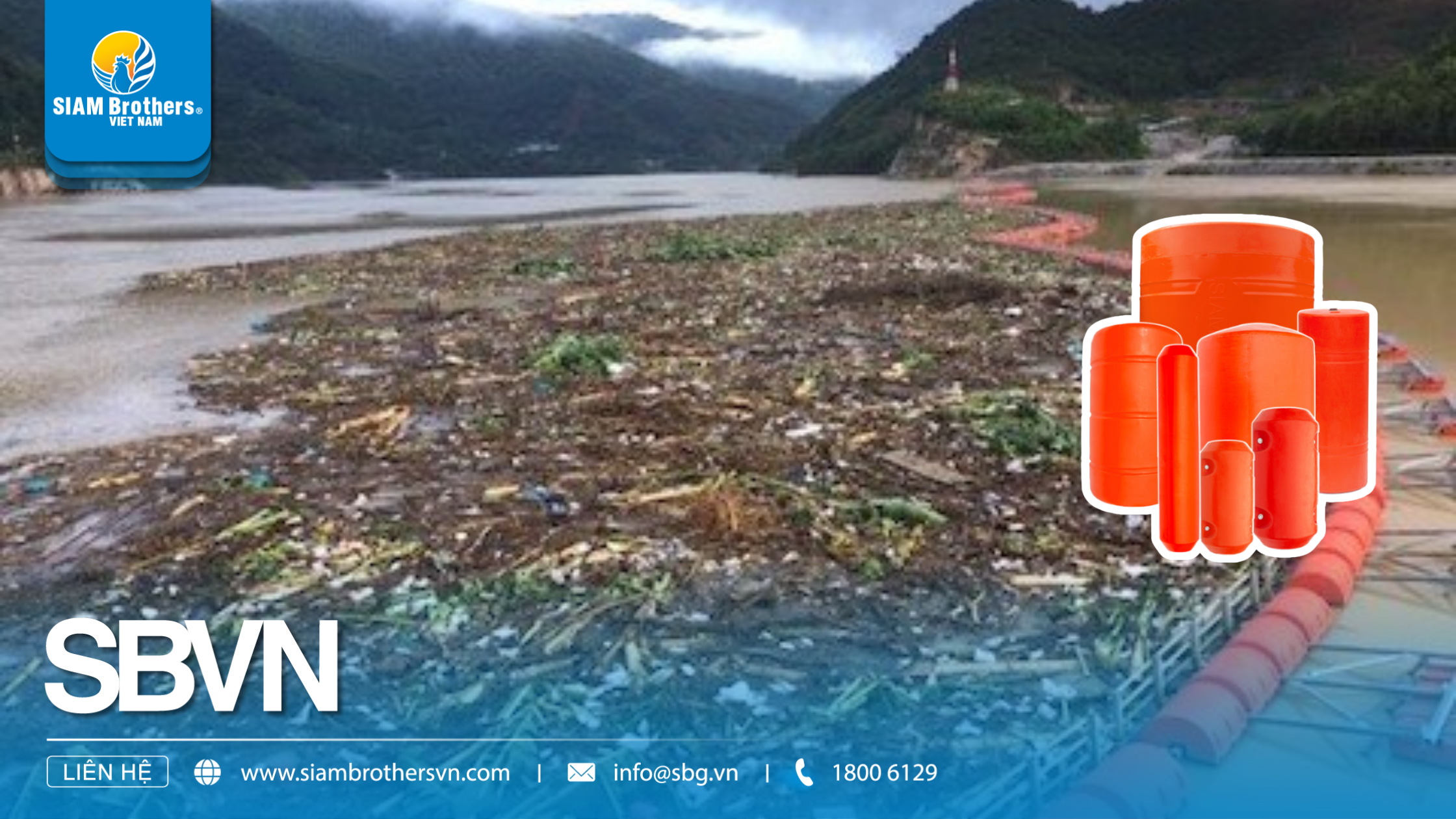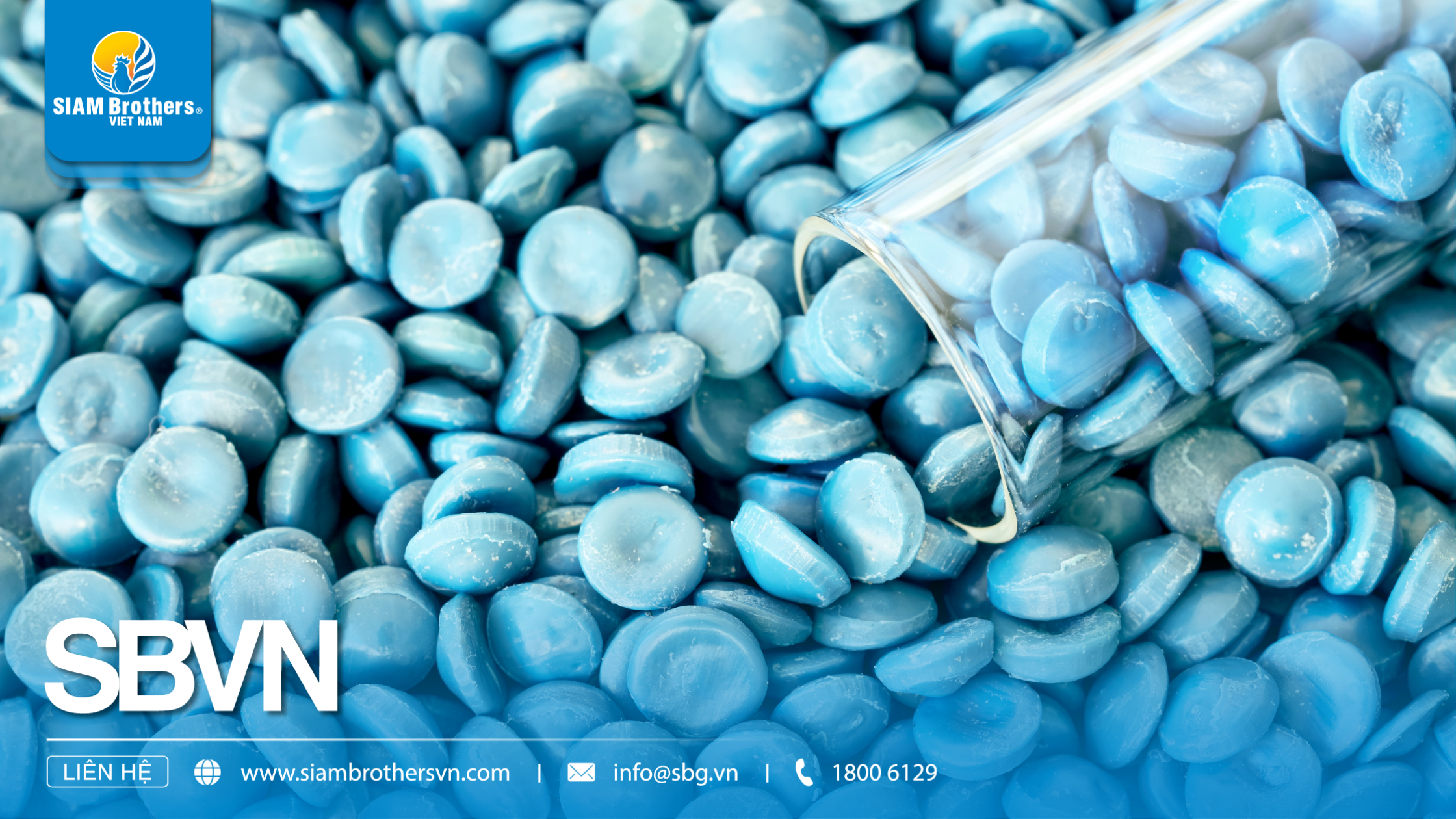In today’s industrial landscape, one type of specialized plastic is widely used in everything from HDPE fish cage floats and trash barrier buoys to household food-grade containers and outdoor water pipes. That material is HDPE plastic (High-Density Polyethylene) — a seemingly simple substance with exceptional durability and surprising versatility.
So, what exactly is HDPE plastic, and why is it trusted by both enterprises and households alike? In this article, SIAM Brothers Vietnam will guide you through everything you need to know about this “super durable” plastic—from its origin and technical properties to real-world applications in both daily life and industrial sectors. Especially if you're looking for material solutions in aquaculture, agriculture, or manufacturing, don't miss the expert insights at the end of this article.
1. What Is HDPE Plastic?
HDPE (High-Density Polyethylene) is a thermoplastic polymer from the polyolefin group, synthesized from ethylene gas via a low-pressure polymerization process. It features a high molecular density and uniform crystalline structure—resulting in excellent rigidity, durability, and water resistance.
1.1 Key Characteristics That Distinguish HDPE from Other Plastics
- Color: Typically natural white or translucent; easily pigmented during manufacturing.
- Lightweight yet strong: Resists deformation under mechanical pressure.
- Corrosion-resistant: Unaffected by acids, alkalis, and seawater—an essential property for aquaculture and agricultural use.
- Heat-resistant: Maintains stability under direct sunlight and high temperatures.
- BPA-free: Safe for direct contact with food and drinking water.
1.2 HDPE vs. Other Common Plastics
| Comparison Criteria |
HDPE Plastic |
LDPE Plastic |
PP (Polypropylene) |
| Molecular Density |
High |
Low |
Medium |
| Mechanical |
Strength |
Very High |
Lower Medium |
| Chemical Resistance |
Excellent |
Weaker |
Good |
| Outdoor Use |
Excellent |
Limited |
Moderate |
1.3 Surprising Facts About HDPE Plastic
- HDPE is coded with recycling symbol #2, indicating high safety and excellent recyclability.
- It is the second most commonly used plastic worldwide after PET, thanks to its affordability and broad application range.
- At SIAM Brothers Vietnam, HDPE plastic is the core material used in products like HDPE fish cage floats and trash barrier buoys, designed for durability and resilience in harsh marine environments.
2. Is HDPE Plastic Safe and Non-Toxic?
2.1 BPA-Free – A Safe Choice for Humans and the Environment
- BPA (Bisphenol A), found in some other plastics, can disrupt hormonal balance with prolonged exposure.
- HDPE plastic is 100% BPA-free, making it safe for food packaging, water storage, and skin contact.
2.2 Widely Used in High-Safety Applications
- Food packaging and purified water bottles
- Domestic water pipes
- Children’s toys
- Chemical containers in healthcare and agriculture
These use cases demonstrate that HDPE plastic is not just suitable—it is often recommended for products requiring high safety standards.
At SIAM Brothers Vietnam, products like HDPE fish cage floats and HDPE trash barrier buoys are manufactured under strict quality control to ensure they contain no harmful substances and remain eco-friendly for marine environments.
2.3 Certified Safety from Trusted Organizations
- Many HDPE-based products are certified by global standards such as FDA, RoHS, and ISO.
- These certifications objectively confirm that HDPE plastic is a reliable, safe material for businesses and consumers.
Summary:
- HDPE plastic is non-toxic and considered one of the safest plastics in use today.
- With its BPA-free composition, strong chemical resistance, and high recyclability, HDPE is ideal for long-term, environmentally friendly applications.
- If you're searching for durable, safe, and marine-friendly HDPE solutions for aquaculture or agriculture, SIAM Brothers Vietnam is the trusted partner you can count on.

3. Applications of HDPE Plastic in Daily Life and Industrial Production
3.1 Applications of HDPE Plastic in Everyday Life
- Household water pipes: HDPE plastic is widely used to manufacture domestic water supply pipes due to its corrosion resistance, high pressure tolerance, and non-toxic nature.
- Food packaging: HDPE is commonly found in containers for milk, drinking water, cooking oil, and other liquids, as it is BPA-free and safe for human health.
- Outdoor household items: Garden furniture, trash bins, and storage containers made from HDPE plastic offer excellent weather resistance and UV protection, ensuring they remain durable and unbreakable over time.
- Children’s toys: HDPE is non-toxic and meets strict hygiene and safety standards, making it ideal for manufacturing children’s products.
3.2 Industrial Applications of HDPE Plastic
- HDPE fish cage floats: At SIAM Brothers Vietnam, HDPE fish cage floats are a flagship product, specially designed for aquaculture systems. With outstanding buoyancy, corrosion resistance, and structural strength, HDPE floats help ensure operational efficiency and safety in marine and freshwater fish farming.
- HDPE trash barrier buoys: An effective solution to capture and block floating waste. These buoys are highly durable and weather-resistant—ideal for urban water management projects, eco-tourism areas, and riverside industrial zones.
- Chemical and fuel storage tanks: Thanks to its resistance to acids, alkalis, and industrial solvents, HDPE plastic is frequently used to manufacture safe, long-lasting chemical storage tanks.
- Industrial flooring and partition panels: With excellent stiffness and non-stick surfaces, HDPE is applied in food processing plants, cold storage facilities, and other areas requiring strict hygiene controls.
- Technical pipelines in construction: HDPE pipes are capable of withstanding high pressure and offer exceptional longevity, making them suitable for gas lines, wastewater systems, and agricultural irrigation.

4. FAQs – Frequently Asked Questions About HDPE Plastic
4.1 Is HDPE Plastic Recyclable?
Yes. HDPE is classified as plastic number 2, known for its high recyclability and environmental friendliness. After use, HDPE products can be processed into new items such as containers, pallets, plastic pipes, or other industrial materials.
4.2 What Industries Commonly Use HDPE Plastic?
HDPE plastic is utilized across a broad range of sectors:
- Domestic water piping and food-grade packaging
- Household goods, children’s toys, and outdoor equipment
- Engineering products such as HDPE floating buoys, trash barriers, storage tanks, and industrial lining panels
- Thanks to its durability, lightweight nature, and moldability, HDPE plastic is an ideal material for both consumer and technical applications.
4.3 How Can You Identify HDPE Plastic Products?
- HDPE products typically feature a recycling code “2” on the bottom or body of the item.
- Common colors: opaque white, blue, black, or other customized shades depending on usage.
- HDPE plastic has a smooth surface and is resistant to cracking or brittleness, unlike lower-quality recycled plastics.
4.4 Why Should Businesses Choose HDPE Plastic Products?
- Long service life & high performance: HDPE offers exceptional strength, corrosion resistance, and UV protection—leading to durable products with reduced maintenance costs.
- Safe for people and the environment: HDPE contains no BPA and releases no toxins during use, making it suitable for high-safety sectors such as aquaculture, food processing, and environmental projects.
- Cost-effective investment: Compared to metals or traditional plastics, HDPE is affordable and easy to mass-produce.
- Versatile and customizable: HDPE can be molded into various shapes and tailored to specific design requirements—ideal for a wide range of business models.
- Supports sustainability goals: Choosing HDPE, especially recycled HDPE, helps businesses strengthen their brand image and social responsibility through eco-conscious product development.

At SIAM Brothers Vietnam, we take pride in being a pioneer in applying high-quality HDPE plastic in the production of fish cage floats, trash barrier buoys, and other specialized products for the aquaculture, environmental, and industrial sectors. Each product reflects our commitment not only to technical excellence but also to the protection of water resources and natural ecosystems.
Looking for durable and eco-friendly HDPE solutions for your project or production model?
Contact us today via hotline 1800 6129 or Zalo OA for expert consultation and fast quotations.
Your sustainable solution starts with the right material—choose HDPE from SIAM Brothers Vietnam.
Source: SIAM Brothers Vietnam
Contact us:
Address: 5th floor, VRG Building, 177 Hai Ba Trung Street., Vo Thi Sau Ward, District. 12, Ho Chi Minh City, Vietnam
Tel: (+84) 28 38 912 889
Hotline: 1800 6129
Facebook: www.facebook.com/siambrothersvn
Email: info@sbg.vn
YouTube: youtube.com/@siambrothersvietnam1728
X: x.com/sbvnjsc
OA Zalo: zalo.me/1402339229697925373
App SBVN ID:





